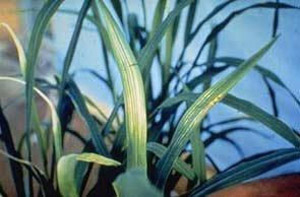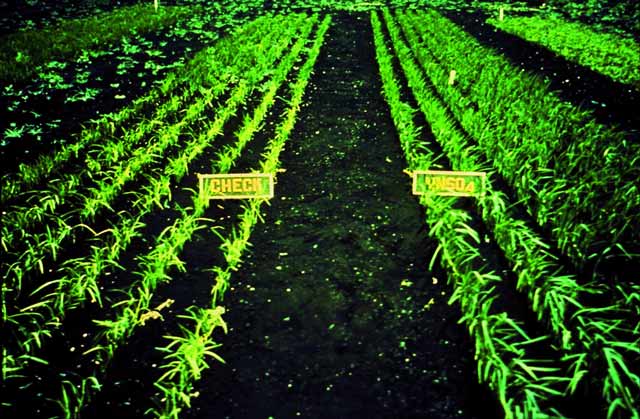Manganese (Mn) deficiency

What it does
Manganese (Mn) deficiency affects photosynthesis and protein synthesis. Mn-deficient plants are often deficient in Phosphorus.
Why and where it occurs
Mn deficiency is relatively rare especially in irrigated rice systems.
It occurs frequently in upland rice, but is not common in rainfed or lowland rice because the solubility of Mn increases under submerged conditions.
Soils particularly prone to Mn deficiency include the following types:
- acid upland soils (Ultisols, Oxisols)
- alkaline and calcareous soils with low organic matter status and small amounts of reducible Mn
- degraded paddy soils containing large amounts of active Iron (Fe)
- leached sandy soils containing small amounts of Mn
- leached, old acid sulfate soils with low base content
- alkaline and calcareous organic soils (Histosols)
- highly weathered soils with low total Mn content
How to identify
 Check the plant for the following symptoms:
Check the plant for the following symptoms:
- pale grayish green interveinal chlorosis spreads from the tip to the leaf base
- necrotic brown spots develop later and leaf becomes dark brown
- newly emerging leaves are short, narrow, and light green
Manganese deficient plants are shorter, with fewer leaves, less weight, and have smaller root system at tillering. Plants are usually stunted but tillering is not affected.
Affected plants are more susceptible to brown spot (caused by Helminthosporium oryzae). Also, Mn-deficient rice plants often deficient in Phosphorus as well.
In soils where both Mn deficiency and Fe toxicity occur, Mn-deficient rice plants contain a large concentration of Fe, and may also show symptoms of bronzing.
Why is it important
Manganese deficiency is not very common in irrigated or rainfed rice, but can be a common problem in upland systems. Damage, by Mg deficiency, could be very severe throughout the growth stage of the crop.
How to manage
Where possible, the general management options for Mn deficiency are:
- Apply farmyard manure or straw (incorporated or burned) to balance Mn removal and enhance Mn(IV) reduction in soils containing small amounts of Mn and low organic matter status.
- Use acid-forming fertilizers, e.g., ammonia sulfate [(NH4)2SO4] instead of urea.